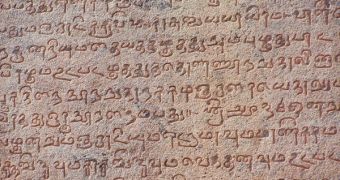The Southwest script was a very old Iberian language, which has long since gone extinct. That is, until archaeologists started uncovering hints of its existence, in the form of various tablets and slabs of rock, adorned with the most complex symbols. Thus far, all attempts at deciphering the ancient relics have failed completely, and the 2,500-year-old language still keeps its secrets. However, with last year's discovery of the largest portion of such a text, language experts now hope to finally crack this enigma.
Thus far, more than 90 slabs containing the extinct dialect have been found, mostly in southern Portugal, but also in the neighboring Spanish province of Andalucia. Since the 18th century, various people have tried to figure out the code embedded in the seemingly-random symbols adorning each of the stone fragments. There are letters unlike any researcher has seen, some shaped like numbers, others like pieces of clothing, and some that simply look like crossed sticks.
Almodovar is the Portuguese town that sits at the very core of the Southwest script region. Around the city, numerous discoveries have been made, and some of them are even exhibited in the local museum, which was opened some 2 years ago. All over the place, archeology teams continue to discover more and more slates or tablets, but most of these artifacts are severely damaged, which makes any understanding of the text impossible.
This endeavor is also made worse by the fact that the writings are continuous, without any separation between the words. In addition, it's suspected that it reads from right to left, and its shapes are weird, in a sense that the entire language looks as if it took numerous elements from all sorts of cultures. In the past, Spain sat at a crosswords in the ancient world, being subjected to numerous cultural influences, both from Europe and Africa. This may be one explanation of the complexity of the script.
“We have a lot of doubts. We can read characters and see the phonetics in action (...), but when we try to understand what they actually mean we have a lot of problems,” University of Lisbon lecturer Amilcar Guerra, who has been part of the team that has discovered the recent artifact, says. He adds that the researchers have managed to get a hint of what the words may sound like, but that, for them, they make no sense, and that other dialects in the area are completely different from this one.

 14 DAY TRIAL //
14 DAY TRIAL //